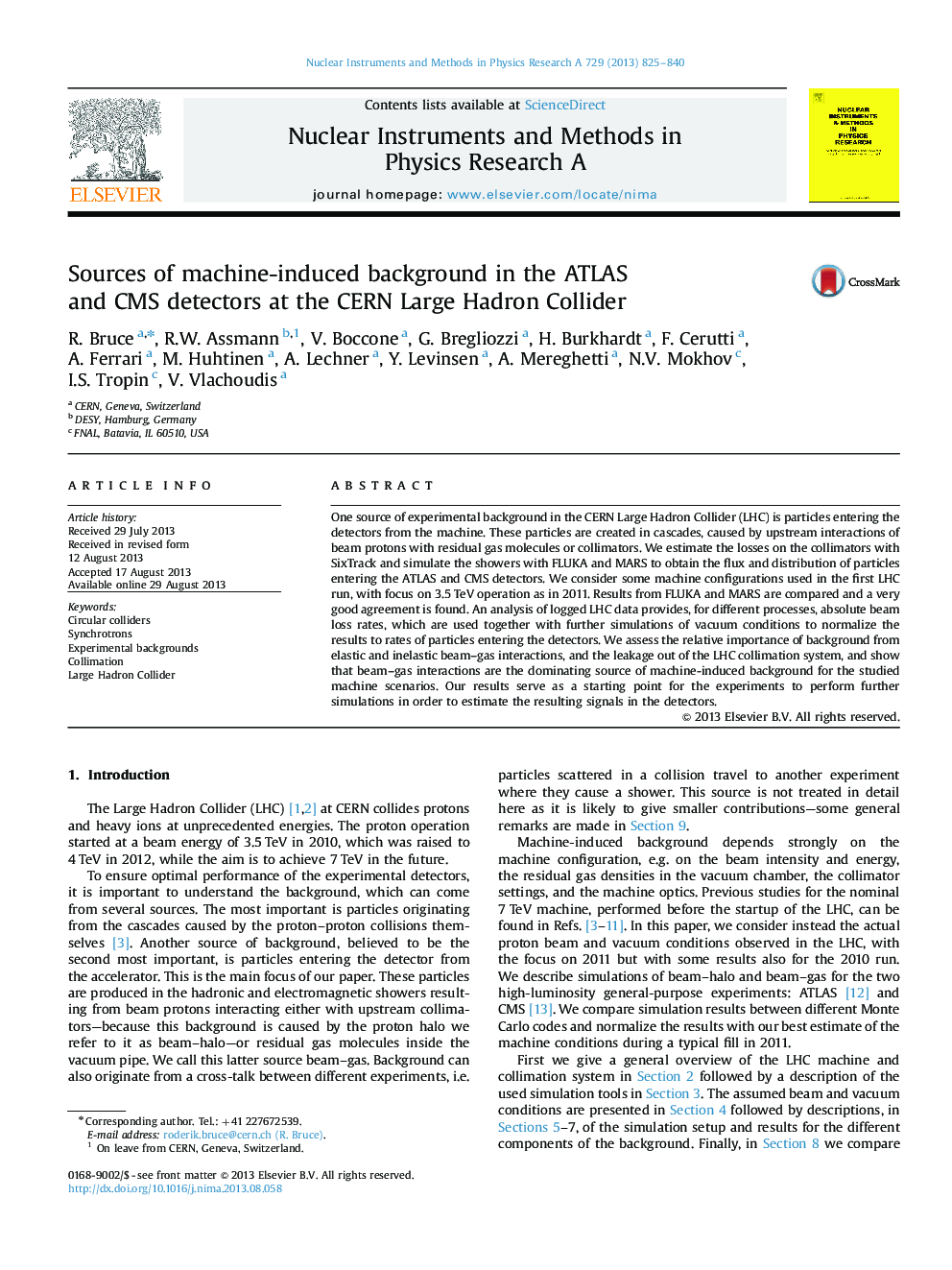| Article ID | Journal | Published Year | Pages | File Type |
|---|---|---|---|---|
| 8179080 | Nuclear Instruments and Methods in Physics Research Section A: Accelerators, Spectrometers, Detectors and Associated Equipment | 2013 | 16 Pages |
Abstract
One source of experimental background in the CERN Large Hadron Collider (LHC) is particles entering the detectors from the machine. These particles are created in cascades, caused by upstream interactions of beam protons with residual gas molecules or collimators. We estimate the losses on the collimators with SixTrack and simulate the showers with FLUKA and MARS to obtain the flux and distribution of particles entering the ATLAS and CMS detectors. We consider some machine configurations used in the first LHC run, with focus on 3.5Â TeV operation as in 2011. Results from FLUKA and MARS are compared and a very good agreement is found. An analysis of logged LHC data provides, for different processes, absolute beam loss rates, which are used together with further simulations of vacuum conditions to normalize the results to rates of particles entering the detectors. We assess the relative importance of background from elastic and inelastic beam-gas interactions, and the leakage out of the LHC collimation system, and show that beam-gas interactions are the dominating source of machine-induced background for the studied machine scenarios. Our results serve as a starting point for the experiments to perform further simulations in order to estimate the resulting signals in the detectors.
Related Topics
Physical Sciences and Engineering
Physics and Astronomy
Instrumentation
Authors
R. Bruce, R.W. Assmann, V. Boccone, G. Bregliozzi, H. Burkhardt, F. Cerutti, A. Ferrari, M. Huhtinen, A. Lechner, Y. Levinsen, A. Mereghetti, N.V. Mokhov, I.S. Tropin, V. Vlachoudis,
